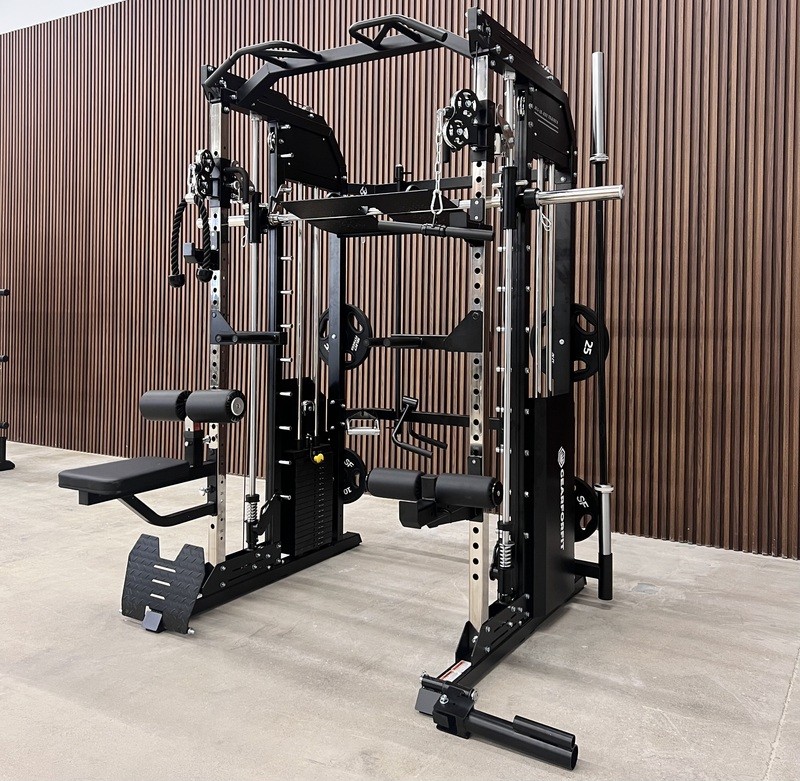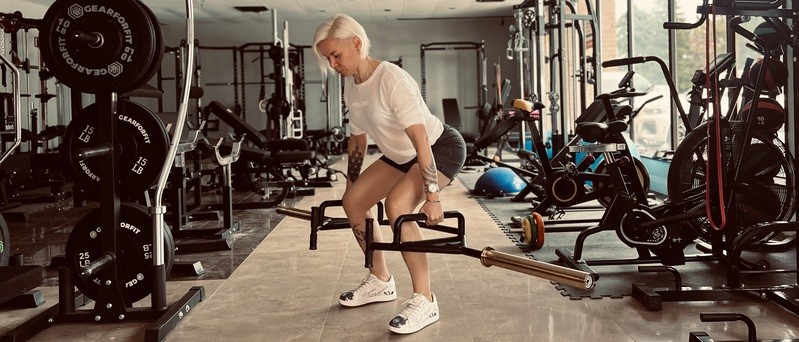blog
The Ultimate Fitness Hack: How Fasted Cardio Can Supercharge Your Fat-Burning Goals
May 01, 2023Are you looking for a way to burn fat faster and reach your fitness goals quicker? If so, you may want to consider incorporating fasted cardio into your workout routine. Fasted cardio is a form of cardiovascular exercise performed on an empty stomach, typically in the morning before breakfast. This article will explore how fasted cardio works, its benefits, research studies on the topic, how it compares to fed cardio, how to do it safely and effectively, the best exercises for fasted cardio, and how to track progress.
Introduction to Fasted Cardio
Fasted cardio is a type of cardiovascular exercise that is performed on an empty stomach. This means that you haven’t eaten anything for several hours before starting your workout. The idea behind fasted cardio is that your body will use stored fat as its primary source of fuel during exercise, leading to increased fat burning and weight loss.
The theory behind fasted cardio is that when you exercise in a fasted state, your insulin levels are low, and your body's fat-burning mechanisms are activated. When you eat, your body releases insulin to help process the food and store energy. Insulin inhibits the body's ability to burn fat for energy. By exercising in a fasted state, insulin levels remain low, and the body can tap into its fat stores for energy.
How Fasted Cardio Works
When you exercise in a fasted state, your body is forced to use stored fat as its primary source of fuel. This is because your body's glycogen stores are depleted during the fasted state. Glycogen is the stored form of glucose that is used for energy during exercise. When glycogen levels are low, the body turns to fat for energy.
During exercise, the body breaks down fat molecules into free fatty acids and glycerol, which are then transported to the muscles to be used for energy. The fatty acids are broken down further in the muscles to produce energy through a process called beta-oxidation. This process increases the body's metabolic rate, which leads to increased fat burning, even after the workout is over.
Benefits of Fasted Cardio
There are numerous benefits to incorporating fasted cardio into your workout routine. The most significant benefit is increased fat burning. When you exercise in a fasted state, your body is forced to use stored fat as its primary source of fuel, leading to increased fat burning and weight loss.
Another benefit of fasted cardio is improved insulin sensitivity. Insulin sensitivity refers to how sensitive your body is to the effects of insulin. When you exercise in a fasted state, your body becomes more sensitive to insulin, leading to better blood sugar control and improved overall health.
Research studies have also shown that fasted cardio can lead to increased muscle retention. When you exercise in a fasted state, your body's muscle-building mechanisms are activated, leading to increased muscle growth and retention.
Research Studies on Fasted Cardio
Research studies have shown that fasted cardio can lead to increased fat burning and weight loss. One study published in the British Journal of Nutrition found that participants who performed fasted cardio burned significantly more fat than those who performed the same workout after eating breakfast.
Another study published in the International Journal of Sports Nutrition and Exercise Metabolism found that participants who performed fasted cardio had significantly lower insulin levels compared to those who performed the same workout after eating breakfast. Lower insulin levels lead to increased fat burning and improved overall health.
Fasted Cardio vs. Fed Cardio: Which is Better?
While both fasted and fed cardio have their benefits, research studies have shown that fasted cardio may be more effective for fat burning and weight loss. When you exercise in a fasted state, your body is forced to use stored fat as its primary source of fuel, leading to increased fat burning and weight loss.
Additionally, fasted cardio can lead to improved insulin sensitivity and increased muscle retention. However, it's important to note that fasted cardio may not be suitable for everyone. People with medical conditions that affect blood sugar levels, such as diabetes, should consult with their doctor before attempting fasted cardio.
How to do Fasted Cardio Safely and Effectively
To do fasted cardio safely and effectively, it's important to follow a few guidelines. First, start slowly and gradually increase the intensity and duration of your workouts. This will help your body adjust to the fasted state and reduce the risk of injury.
Second, make sure to stay hydrated before, during, and after your workout. Dehydration can lead to fatigue, dizziness, and other health problems.
Third, listen to your body and stop exercising if you experience any pain or discomfort. It's important to take care of your body and avoid pushing yourself too hard.
Finally, make sure to eat a balanced meal after your workout to replenish your energy stores and promote muscle recovery.
Pre-Workout Nutrition for Fasted Cardio
While fasted cardio is performed on an empty stomach, it's still important to fuel your body with the right nutrients before your workout. This will help you perform at your best and reduce the risk of injury.
Some pre-workout snacks that are suitable for fasted cardio include:
- A handful of nuts or seeds
- A small serving of protein, such as a hard-boiled egg
It's important to avoid high-carbohydrate and high-sugar snacks before fasted cardio, as these can cause a spike in insulin levels and inhibit fat burning.
Best Exercises for Fasted Cardio
There are many different exercises that can be performed during fasted cardio. The best exercises are those that elevate your heart rate and engage multiple muscle groups. Some examples of effective exercises for fasted cardio include:
- Running or jogging
- Cycling
- Swimming
- High-intensity interval training (HIIT)
It's important to choose exercises that you enjoy and that are suitable for your fitness level. If you're new to fasted cardio, start with low-intensity exercises and gradually increase the intensity and duration of your workouts.
Tracking Progress with Fasted Cardio
To track your progress with fasted cardio, it's important to measure your weight, body fat percentage, and other metrics regularly. This will help you determine if you're making progress toward your fitness goals and make adjustments to your workout routine as needed.
Additionally, keeping a workout journal can help you stay motivated and track your progress over time. Record the type of exercise, duration, and intensity of each workout, as well as any other relevant information, such as your heart rate and how you felt during the workout.
Conclusion: Is Fasted Cardio Right for You?
Fasted cardio can be an effective way to supercharge your fat-burning goals and reach your fitness goals quicker. However, it may not be suitable for everyone, especially those with medical conditions that affect blood sugar levels.
Before attempting fasted cardio, consult with your doctor and start slowly, gradually increasing the intensity and duration of your workouts. Additionally, make sure to stay hydrated, fuel your body with the right nutrients, and listen to your body to avoid injury.
By following these guidelines and incorporating fasted cardio into your workout routine, you can achieve your fitness goals and improve your overall health and well-being.
CTA
Ready to give fasted cardio a try? Start by incorporating one fasted cardio workout into your routine per week and gradually increase the frequency and intensity over time. Remember to stay hydrated, fuel your body with the right nutrients, and listen to your body to avoid injury. With time and consistency, you'll see the fat-burning benefits of fasted cardio and reach your fitness goals faster!





